Traveling with a pet can be a stressful experience for both the owner and the animal. Beyond the necessary preparation and paperwork, there is also the concern of finding a suitable carrier for your furry companion.
Airlines have strict regulations regarding transporting animals, and it’s crucial to adhere to these guidelines to ensure a safe and comfortable journey for everyone involved. However, with varying rules and requirements across different airlines, knowing exactly how strict they are about pet carriers can be challenging.
Here, we will dive into the guidelines and restrictions major airlines implement to understand just how serious they are about pet carriers. We will also provide helpful tips and recommendations to make the process smoother and stress-free for pet owners.
Whether you are planning to fly with your pet for the first time or are a seasoned traveler, this article will serve as a comprehensive resource for understanding the rules and regulations surrounding pet carriers on flights. So, let’s explore how strict are airlines about pet carriers.
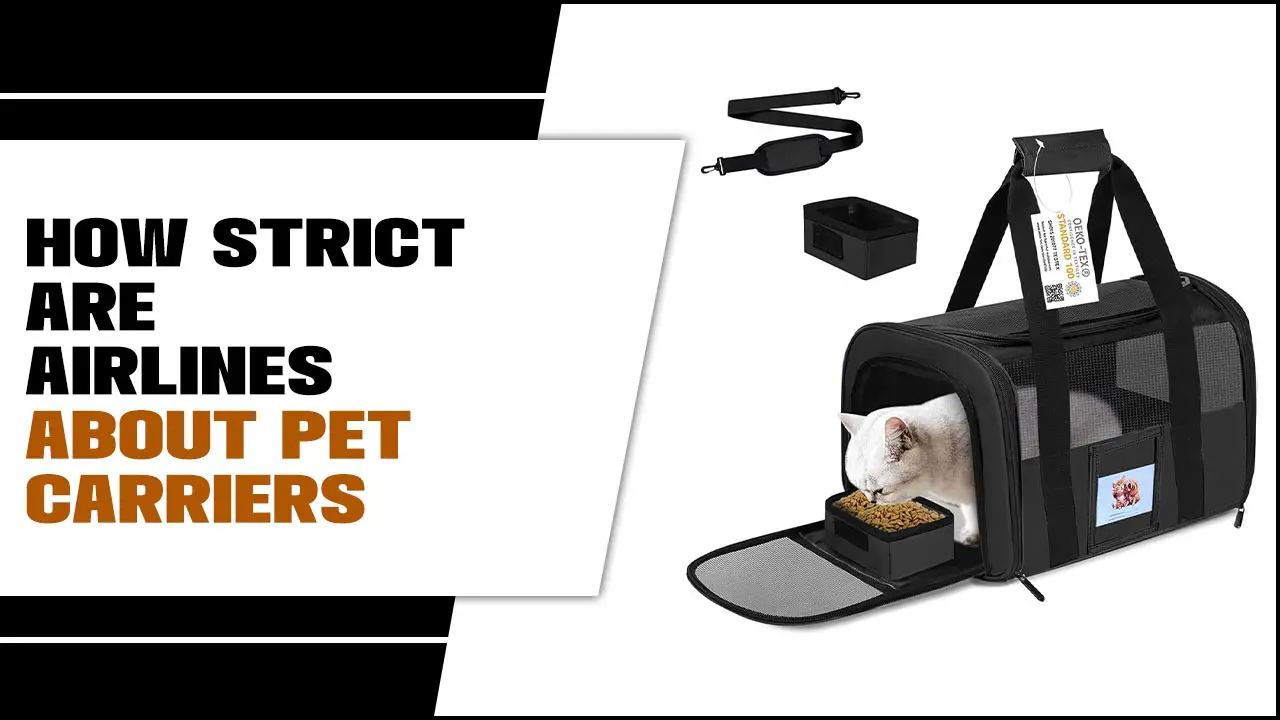
How Strict Are Airlines About Pet Carriers: Your Complete Guide
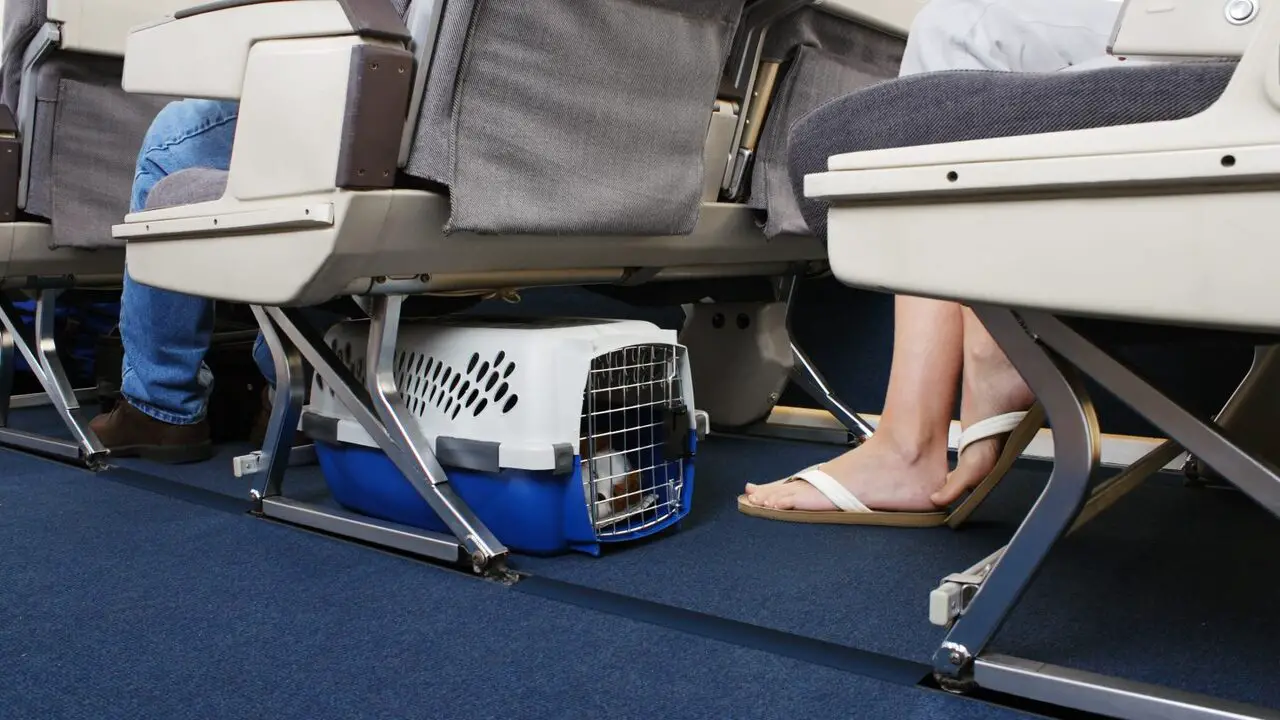
United Airlines has strict requirements for the size and ventilation of pet carriers. They must stow under the seat during the flight. Delta Airlines also enforces specific regulations, requiring carriers to fit under the seat and be leak-proof and ventilated.
American Airlines limits both size and weight for carriers, and they, too, must fit under the seat. Southwest Airlines only allows small cats and dogs in carriers that meet the size requirements.
However, there are certain restrictions on breed and size for Southwest Airlines. These airlines have rules and regulations to ensure the safety and comfort of pets and passengers during air travel. Below, we discuss more how strict are airlines about pet carriers.
Size And Weight Restrictions For Pet Carriers
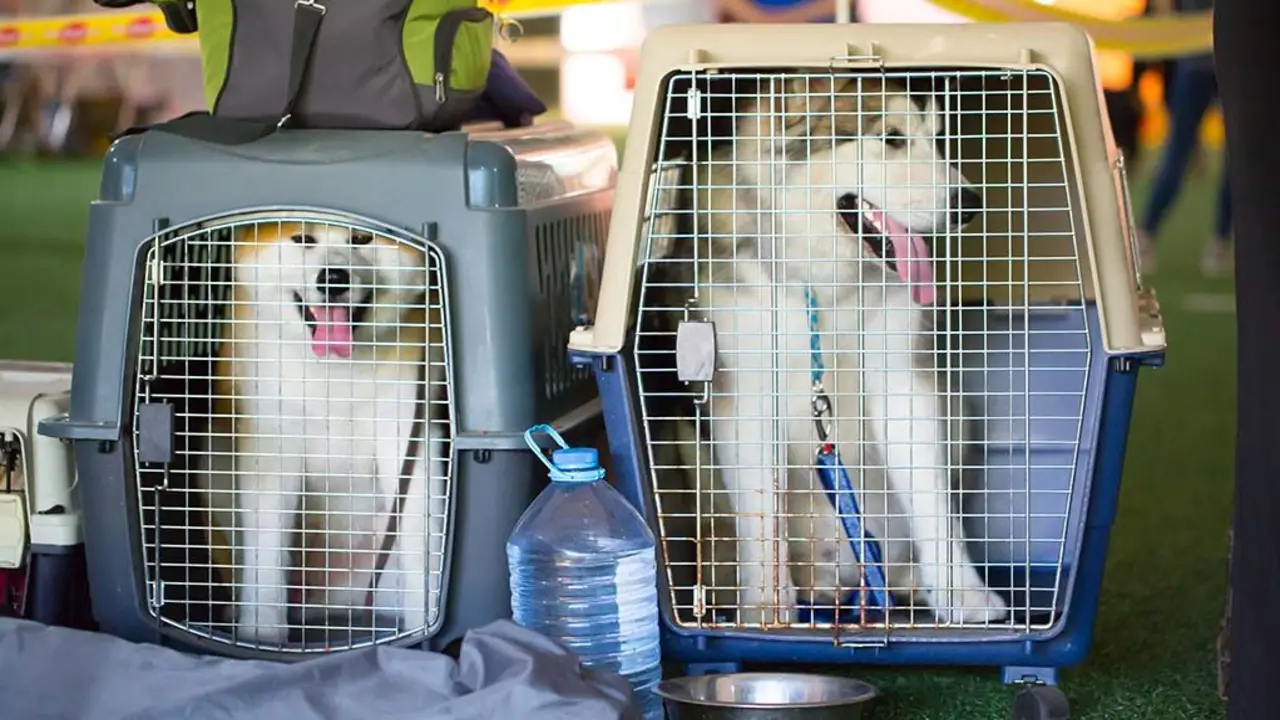
When traveling with pets, airlines have specific size and weight restrictions for pet carriers that must be followed. These restrictions ensure the safety and comfort of the pet and other passengers.
You must check with your specific airline before traveling to ensure that you meet their pet carrier requirements. Failure to comply with these regulations may result in your pet not being allowed on the flight or additional fees being incurred. Here are some common size and weight restrictions for pet carriers:
Size: Most airlines require that pet carriers fit under the seat in front of you. The typical dimensions allowed are around 18 inches long, 11 inches wide, and 11 inches high.
Weight: The weight limit for pet carriers can vary between airlines, but it is typically around 20 pounds. It’s important to note that this weight includes both the pet and carrier combined.
Other requirements: In addition to size and weight restrictions, airlines may have requirements such as proper ventilation, secure closures, and leak-proof bottoms for the pet carrier.
Types Of Approved Pet Carriers By Airlines
Regarding travelling with pets, airlines have specific requirements for pet carriers to ensure the safety and comfort of the pet and other passengers. While the strictness may vary between airlines, it is important to adhere to their guidelines to avoid any issues or delays. Here are some types of approved pet carriers commonly accepted by airlines:
Hard-sided carriers: These carriers provide sturdy protection and security for your pet during travel. They typically have ventilation holes and a secure door.
Soft-sided carriers: These carriers are lightweight and more flexible, making them easier to carry. They often have mesh panels for better airflow and visibility.
Expandable carriers: These can provide more space for your pet during the flight. However, make sure to check if the expanded size meets airline regulations.
Under-seat carriers: These smaller carriers are designed to fit under the seat in front of you, allowing your pet to remain close to you throughout the journey.
It is crucial to check with your specific airline for their requirements regarding dimensions, weight limits, and any additional restrictions on pet carriers. Choosing an approved carrier that meets these guidelines ensures a smoother and stress-free travel experience for you and your furry friend.
Requirements For Ventilation And Visibility In Pet Carriers
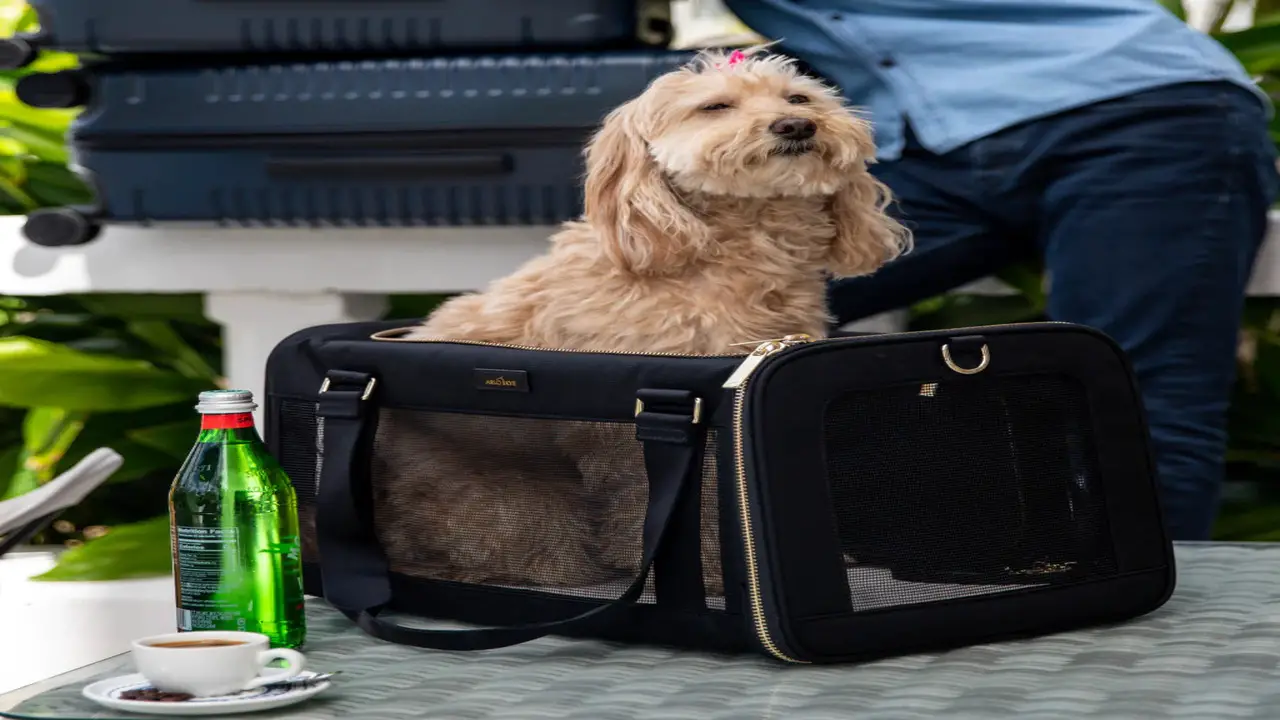
Regarding pet carriers, airlines have strict requirements regarding ventilation and visibility. These regulations are in place to ensure the safety and comfort of your furry friend while traveling. Most airlines require pet carriers to have proper ventilation to allow fresh air circulation.
This can be in mesh windows or openings that provide adequate airflow. Additionally, carriers must provide sufficient visibility for airline staff to check on your pet during the flight. This can be achieved through transparent panels or windows on the carrier.
It is important to carefully review the specific requirements of your chosen airline before traveling with your pet to ensure that you meet all necessary guidelines and prevent any issues or delays at the airport.
Security Features Of Pet Carriers
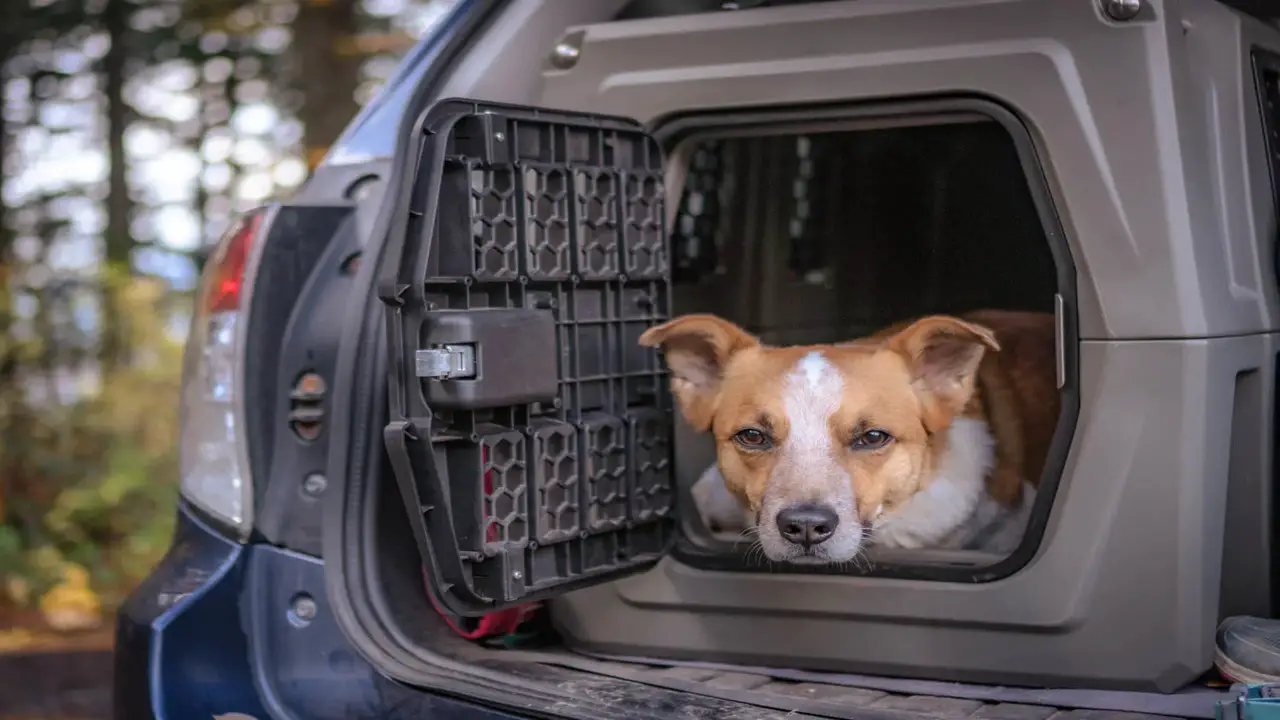
Regarding traveling with pets, airlines have specific guidelines and regulations to ensure the safety and well-being of the animal and other passengers. While each airline may have slightly different requirements, there are some common security features that pet carriers should have. These include:
Adequate ventilation: Pet carriers should have proper air circulation to ensure the animal can access fresh air throughout the journey.
Secure closures: Carriers should have secure closures, such as zippers or latches, to prevent accidental openings during transport.
Sturdy construction: The carrier should be sturdy enough to withstand the rigors of travel without collapsing or breaking.
Leak-proof bottom: The bottom must be easy to clean to prevent any accidents or spills from leaking out of the carrier.
Identification tags: It is recommended to have identification tags on the carrier with your contact information in case it gets separated during travel.
While airlines do enforce these guidelines, it is always best to check with your specific airline before traveling to ensure that you comply with their pet carrier requirements.
Tips For Choosing The Right Pet Carrier For Air Travel
Regarding travelling with pets, airlines have specific guidelines and regulations regarding pet carriers. While enforcement may vary between airlines, it is important to choose the right carrier to ensure a smooth travel experience for you and your furry friend. Here are some points you should keep in mind for choosing the right pet carrier for air travel:
Size: Make sure the carrier is appropriate for your pet. It should be large enough for them to turn around, stand up, and lie down comfortably.
Ventilation: Look for a carrier with plenty of ventilation to keep your pet cool and comfortable during the flight.
Security: Ensure the carrier has secure closures to prevent accidental escapes during transit.
Compliance: Check with your airline to confirm their specific requirements for pet carriers. Some may have restrictions on materials or design features.
Comfort: Consider adding extra padding or familiar bedding inside the carrier to make it more comfortable for your pet.
By selecting a suitable pet carrier and following the airline’s guidelines, you can help ensure a stress-free journey for you and your beloved pet.
How To Prepare Your Pet For Air Travel In A Carrier
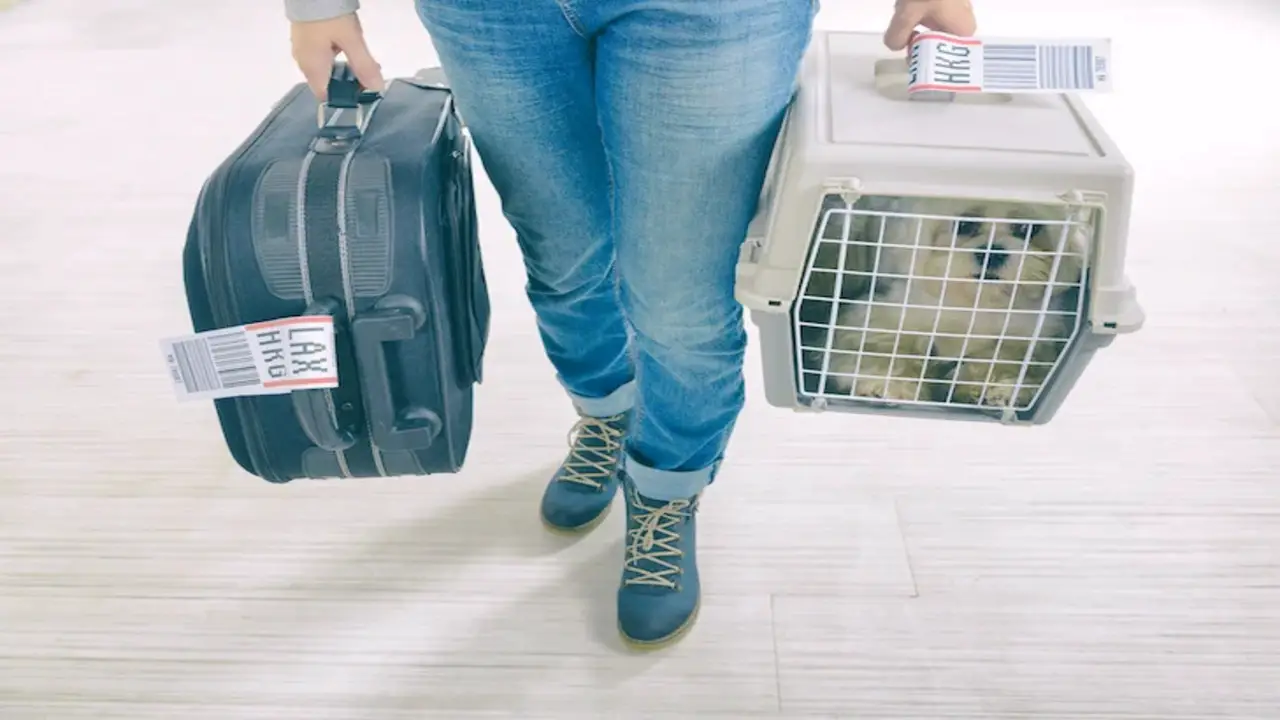
Regarding air travel with pets, airlines have strict guidelines and regulations regarding pet care. Preparing your pet for air is important by ensuring they are comfortable and secure in their carrier. Here are some tips to help you prepare your pet for air travel in a carrier:
- Choose the right size carrier: The carrier should be spacious enough for your pet to stand, turn around, and lie comfortably. It should also be well-ventilated and secure.
- Familiarize your pet with the carrier: Introduce your pet to the carrier gradually, allowing them to explore and become comfortable with it before the trip. Use treats or toys to create positive associations with the carrier.
- Make the carrier a safe and cozy space: Line the carrier with a familiar blanket or bedding to make it feel more like home for your pet. Place their favorite toys or treats inside them during the journey.
- Practice short trips: Take your pet on short car rides in the carrier to get them used to the motion and confinement. This will help reduce anxiety during air travel.
- Consult with your veterinarian to ensure your pet is healthy for air travel. They may also provide additional tips specific to your pet’s needs.
Tips For Traveling With Pets And Choosing The Right Carrier
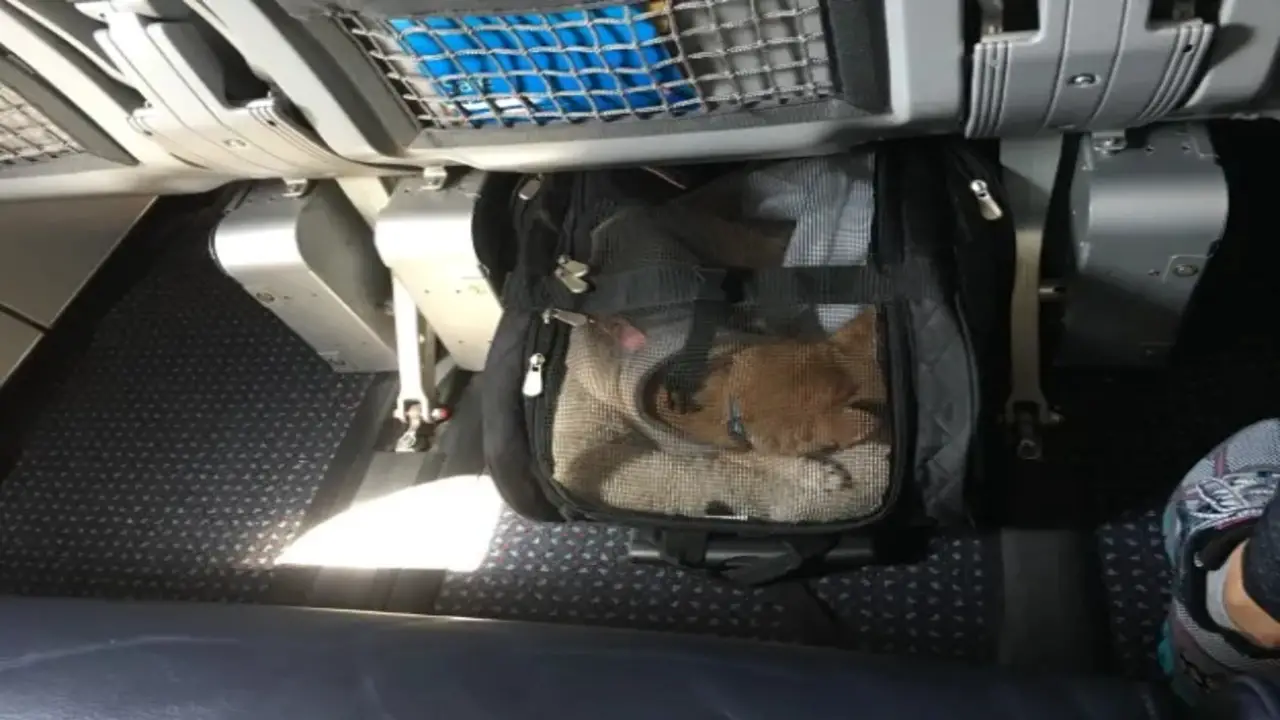
When traveling with pets, airlines have varying degrees of string dingoes to pet carriers. While some airlines may be more lenient and allow a wider range of carriers, others may have specific requirements. Researching the specific airline policies and guidelines before booking is an important flight. Here are some tips to help you choose the right carrier for your pet:
- Check the airline’s size and weight restrictions. Each airline will have different limits on the size and weight of pet carriers allowed in the cabin or cargo hold.
- Opt for an airline-approved carrier. Look for carriers that meet the airline’s specific requirements, such as being made of durable material and having proper ventilation security.
- Consider your pet’s comfort. Choose a seat that allows your pet to stand, turn around, and sit comfortably. It should also have enough padding and support to keep them safe and comfortable during the journey.
- Prepare your pet for travel. Familiarize your pet with their carrier before the trip by gradually introducing them to it and associating it with positive experiences. This can help reduce stress during travel.
How To Ensuring Your Pet’s Comfort And Safety During Air Travel

Regarding air travel with pets, airlines have strict regulations to ensure the comfort and safety of animals and other passengers. Here are some key points to keep in mind when choosing a pet carrier for air travel:
Size requirements: Most airlines have specific size restrictions for pet carriers regarding dimensions and weight. It is important to check with your airline beforehand to ensure your pet carrier meets their guidelines.
Ventilation: Pet carriers must have proper ventilation to ensure your pet can access fresh air throughout the journey. Look for carriers with mesh panels or windows that allow for adequate airflow.
Security: The carrier should be secure and sturdy, with a reliable locking mechanism to prevent accidental openings during transit.
Comfort: Choose a carrier with enough space for your pet to stand, turn around, and lie comfortably. The carrier should also have a soft, padded interior to ensure your pet’s comfort during the flight.
Identification: Clear label your pet carrier with your contact information, name, and phone number. This will help airline staff identify the carrier in case of any mishaps or emergencies.
By following these guidelines and ensuring that your pet is comfortable and safe in their carrier, you can help make the air travel experience as stress-free as possible for you and your furry friend.
Different Airlines’ Rules & Regulations For Pet Carriers
When it comes to traveling with pets, it’s important to be familiar with the rules and regulations of different airlines regarding pet carriers. Each airline may have specific requirements for pet carriers’ size, type, and construction. Some airlines may allow pets in the cabin, while others may require transporting them in the cargo hold. Below we discuss different airlines’ rules & regulations for pet carriers.
United Airlines Pet Carriers Rules And Regulations
When it comes to traveling with pets, United Airlines has specific rules and regulations in place regarding pet carriers. It is important to familiarize yourself with these guidelines to ensure a smooth travel experience for you and your furry friend. Here are the key points to know about United Airlines’ pet carrier requirements:
Size and dimensions: The pet carrier must be small enough to fit under the seat in front of you.
Materials: The carrier must be made of a sturdy and leak-proof material.
Ventilation: The carrier must have proper ventilation on at least two sides.
Closure: The carrier must have a secure and reliable closure mechanism, such as zippers or latches.
Comfort: A comfortable mat or bedding should be provided inside the carrier for your pet’s comfort.
By following these guidelines, you can ensure that your pet’s carrier meets United Airlines’ requirements and that you have a hassle-free journey with your furry companion.
American Airlines Pet Carriers Rules And Regulations
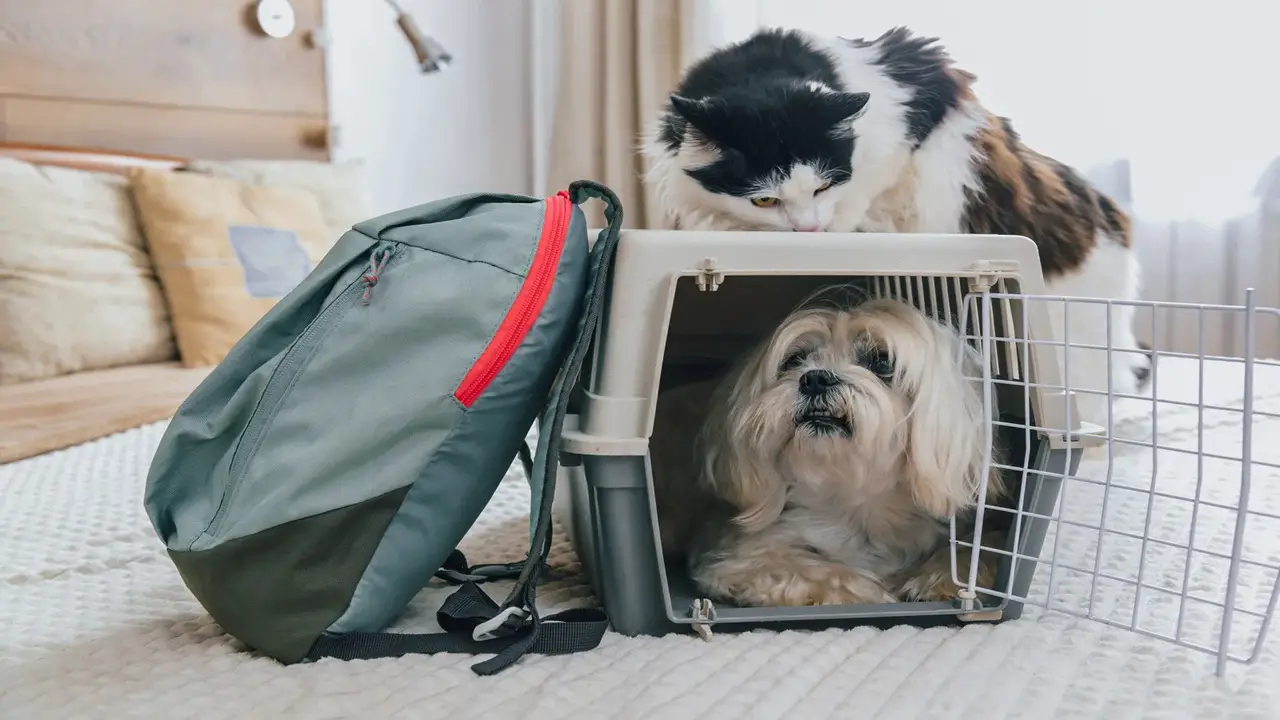
Regarding traveling with pets, airlines like American Airlines have specific rules and regulations regarding pet carriers. Understanding and following these guidelines is important to ensure a smooth and stress-free travel experience for you and your furry friend. Here are some key points to keep in mind:
Size and type of carrier: American Airlines requires that your pet carrier meets certain size restrictions and is approved for air travel. The carrier should be well-ventilated and secure and provide enough space for your pet to stand, turn around, and lie comfortably.
Material of carrier: The carrier should be made of sturdy materials that can withstand the rigors of air travel. Soft-sided carriers are typically allowed for cabin travel, while hard-sided carriers are required for cargo travel.
Security features: The carrier should have secure closures, such as zippers or latches, to prevent your pet from escaping during the journey. It is also recommended to have identification tags on the carrier with your contact information.
Preparation of carrier: Before traveling, properly prepare the carrier by lining it with absorbent material in case of accidents. Familiarize your pet with the carrier by gradually introducing them to it before the trip.
Additional requirements: American Airlines may have additional requirements depending on the destination and type of travel. It is important to check their website or contact customer service for specific information regarding your flight.
By following these guidelines and ensuring that your pet’s carrier meets all requirements, you can ensure a safe and comfortable journey for you and your beloved pet.
Alaska Airlines Pet Carriers Rules And Regulations
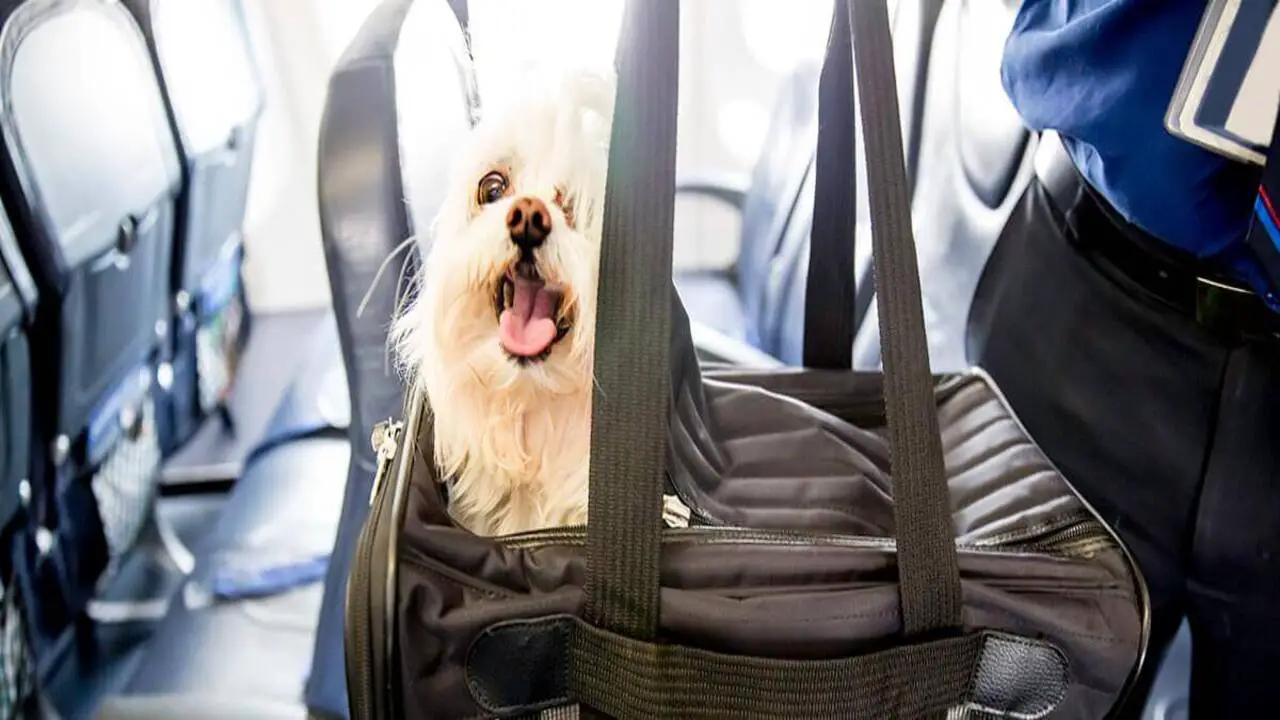
Regarding traveling with pets, airlines have specific rules and regulations to ensure the safety and comfort of the animals and other passengers. Alaska Airlines is no exception. Here are some important rules and regulations regarding pet carriers for Alaska Airlines:
- Pet carriers must be leak-proof and well-ventilated.
- They should be large enough for the animal to stand, turn around, and lie naturally.
- The carrier must fit under the seat in front of you.
- Soft-sided carriers are recommended for in-cabin travel, while hard-sided carriers are required for cargo travel.
- The maximum dimensions for an in-cabin pet carrier are 17″ x 11″ x 9.5″.
- There is a limit of one pet carrier per passenger.
It’s important to note that these rules may vary depending on the airline and destination, so it’s always best to check with the specific airline beforehand to ensure compliance with their pet carrier regulations.
Delta Airlines Pet Carriers Rules And Regulations
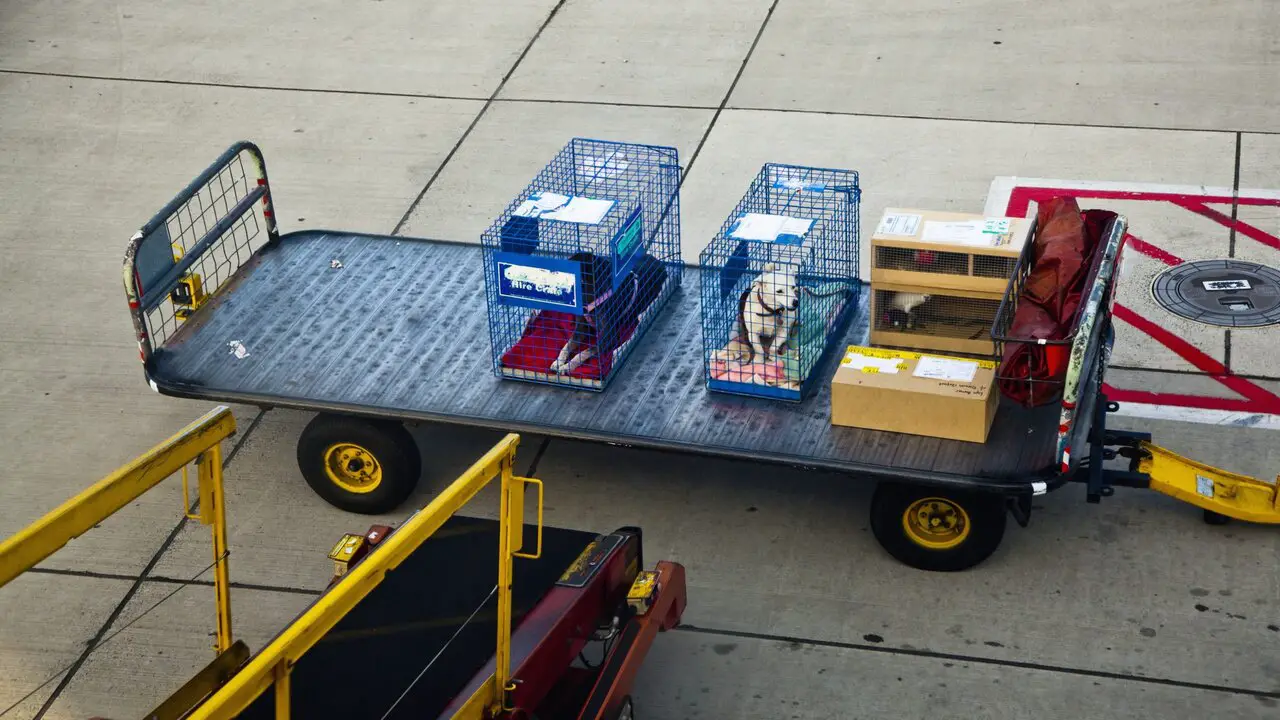
Delta Airlines has specific rules and regulations when it comes to pet carriers. It’s important to note that these rules may vary depending on the airline and destination, so it’s always a good idea to check with Delta Airlines directly before your journey. Here are some key points to keep in mind:
- The pet carrier must be well-ventilated and secure, with no holes or tears that could allow the pet to escape.
- The carrier should be large enough for the pet to stand, turn around, and lie comfortably.
You should make soft-sided carriers of water-repellent material and give them a waterproof bottom. - Hard-sided carriers should have a solid roof and base, with secure latches
- The carrier should have a leak-proof bottom to contain any accidents or spills
- The pet must remain inside the carrier for the flight, with the door always securely closed.
- Emotional support animals may require additional documentation and must be seated near the owner during the flight.
Conclusion
It is crucial to understand how strict are airlines about pet carriers when it comes to traveling. Each airline has guidelines regarding pet carriers, so it’s essential to research and follow them to ensure a smooth and stress-free journey for you and your furry friend.
Additionally, selecting the right pet carrier that meets the airline’s requirements and provides comfort and safety for your pet is paramount. Remalways to prioritize your pet’s well-being and prepare them for air travel by considering their health factors and temperament. By reading the outline and taking necessary precautions, you can enjoy a hassle-free travel experience with your beloved pet.
Frequently Asked Questions
1.What Happens During The Journey With Your
Ans: We will place your pet in a carrier or crate during the journey. The carrier will store under the seat or in the cargo hold. Changes in air pressure during takeoff and landing may cause discomfort, so it’s best to avoid feeding your pet 4-6 hours before the flight.
2.How Do I Know If My Pet Carrier Is Airline-Approved?
Ans: To ensure that your pet carrier is airline-approved, check the specific requirements of the airline you are flying with. Look for carriers that meet the International Air Transport Association (IATA) guidelines. Ensure the carrier is the right size for your pet, has proper ventilation, a secure locking mechanism, and comes with durable materials.
3.How Strict Is Delta With Pet Carrier Size?
Ans: Delta Airlines has specific requirements for pet carriers, including size and materials. Your carrier must fit under the before of you and provide enough room for your pet to stand and turn around. Delta may reject carriers that do not meet their requirements. Checking before booking is crucial booking. Delta recommends measuring your pet and carrier before flying.
4.Are There Any Size Or Weight Restrictions For Pet Carriers On Airlines?
Ans: Most airlines have specific size and weight restrictions for pet carriers. The carrier must allow the pet to stand up, turn around, and lie comfortably. We also consider the weight of the carrier with the pet inside. Check your airline’s policies before booking your flight.
5.Could Delta Have Overbooked Pets On The Flight?
Ans: Airlines can exceed the number of pets on a flight—Delta, like others, limits the number of pets allowed. If Delta does overbook, they typically offer compensation or rebooking options. Check Delta’s pet policies before booking.







